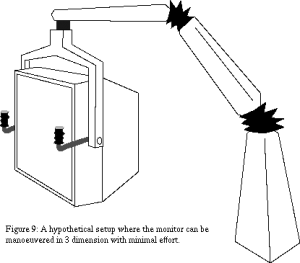In order to think creatively about the impact of the connected world, you need to immerse yourself in the culture, practices and intellectual perspectives that define and exemplify the connected worldview. Here are some suggestions for you and your friends, family and colleagues to try out in the next few months.
Readme
Daniel Suarez’ novels Daemon and Freedom (TM)
, and Cory Doctorow’s Little Brother
and Makers
are four excellent near-future science fiction novels that I recommend highly. Both Suarez and Doctorow are savvy observers of today’s high tech scene, and they use their knowledge of technology to extrapolate our common experience of the Internet and personal computing into imaginative and entertaining stories of the future to come.
(The links above are to Amazon; if you buy there I receive a small commission which I donate to a reputable charity. You can also download Makers for free from Cory’s site. Little Brother too).
GOTO
O’Reilly’s Where 2.0 (3/30 – 4/1, 2010 in San Jose, CA) is the best conference to intersect with experts in mapping, mobile social location services, geoweb, GIS, and more. Also don’t miss the open unconference WhereCamp SF 2010 on April 3&4 hosted by Google.
New thinktank Council have declared April 9th Global Internet of Things Day, an unstructured, self-organizing event aimed at discussion of the notion of an Internet of Things. If you’re in Silicon Valley that day, I’m organizing an informal workshop focused on the Internet of People, Places and Things. If interested, ping me on twitter or email info@lightninglaboratories.com.
If you’re in Europe in May, Lift10 will convene a delightful community of future thinkers with a definite slant toward humanistic design. Geneva, May 5-7, 2010.
Augmented Reality Event 2010 is an industry conference about, well, augmented reality. It runs June 2-3, 2010 at the Santa Clara Convention Center in Silicon Valley. The always provocative Bruce Sterling will keynote. I’ll be speaking there, along with a very bright roster of technical and business folks. If you’re going, get in touch and we’ll find the best parties together.
Get Your Game On
EVOKE is a game about learning to change the world through social innovation. It was developed by the World Bank Institute, the learning and knowledge arm of the World Bank Group, and directed by alternate reality game master Jane McGonigal.
EVOKE is free to play and open to anyone, anywhere. The game begins on March 3, 2010, and players can join the game at any time. Players who successfully complete ten game challenges in ten weeks will be able to claim their honors: Certified World Bank Institute Social Innovator – Class of 2010. Top players will also earn online mentorships with experienced social innovators and business leaders from around the world, and scholarships to share their vision for the future at the EVOKE Summit in Washington DC.
I’m part of the team helping to run the game, along with some truly amazing people from around the world. I hope you’ll check it out, sign up to play, and see firsthand how games might just change the world.






